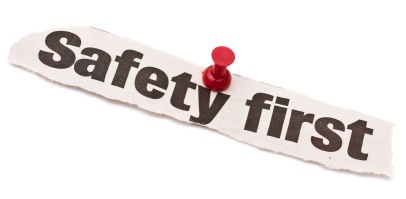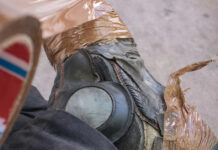If you’ve ever worked in the oil or natural gas industries, we don’t have to tell you how dangerous simply showing up to work can be. These jobs involve some of the most hazardous industrial conditions in any workplace, anywhere. Since the job sites are typically outdoors, are typically in remote areas of the country, and often operate year round regardless of weather conditions, there are all sorts of things that can and do go wrong on the job: Environmental hazards caused by extreme weather, machine accidents, materials hazards, chemicals hazards and more.
The most important deterrent to any accident is wearing the proper personal protection equipment. In fact, according to OSHA, incorrect use of PPE was the fourth-most commonly cited violation in 2005. From start to finish on any project in this line of work, protecting the head, eyes, and face of workers is the utmost priority. For example, in just the drilling phase alone, more than 14 percent of injuries are to the head or eyes of a worker, according to the International Association of Drilling Contractors. In all phases of the oil and gas industries, wearing hard hats and safety glasses is the most important part of protecting workers from these injuries.
When it comes to choosing the right hardhat to wear, the most important factor is the level of protection it offers. To be clear, this is always the first priority. When making this important decision, it’s important to remember that there are two levels of protection classified by both OSHA and the Canadian Standards Association (CSA). ANSI Type I/CSA Type 1 are only designed and intended to protect the wearer from injuries resulting from impact to and penetration of the top of the head. On the other hand, ANSI Type II/CSA Type 2 hard hats protect against not only impacts and penetrations to the top of the head, but also from the sides. This additional protection can be lifesaving.
Plus, it’s important to remember that hard hats made with high-density polyethylene (HDPE) also will protect against chemicals, making them ideal for the oil and gas industries. Polycarbonate caps, on the other hand, don’t offer the same level of protection from chemicals and thus, should be avoided. The other important factor in choosing the right hard hat to wear, second only to protection, is comfort. And this is more important than you might think. The fact is, studies have shown that workers simply don’t wear uncomfortable hard hats consistently, which makes them more vulnerable to injury. You do need a comfortable hardhat. The more suspension points in the hat, the more comfortable it generally is to wear, and the type of suspension material and headband options make a difference too. And since it’s obviously best to wear hard hats as tight as possible — as tight as is comfortable — sizing and adjustability are important aspects of a good cap too.
But it’s not just the protection and comfort that matter. It’s important to make sure to thoroughly inspect the hardhat for chemical exposure every time you put it on. Even things as monotonous as sunscreen, bug spray, and paint contain chemicals that could compromise the protective qualities of your hard hat. Extreme temperatures, ultraviolet rays, and just plain daily wear and tear can lead to cracking, flaking, or other damage. In that case, the cap needs to be replaced immediately. But even when it looks like a hard hat is in good shape, it’s best to replace the suspension every year and the shell every five years, just to be on the safe side. Better safe than sorry.
Besides just wearing hard hats, additional precautions need to be taken when working in refineries and petrochemical plants. Liquid contaminants are more common in these work areas, which means face protection should be worn as well. When choosing a face shield, it should be made out of differentiated chemical-resistant materials that are specific to the type of hazards you’re most likely to encounter. Different hazards and different materials have different protective requirements and abilities. Visors should have anti-fog and anti-scratch coating, for obvious reasons, and if it comes in contact with a chemical, it needs to be replaced. And of course, any time you’re wearing a face shield or a welding helmet, you also need to be wearing safety glasses or goggles.
Combining the right eyewear, hardhat, and face protection saves lives. It’s that simple. If they’ll be used together, make sure they are compatible and fit snugly and comfortably with each other. Working Person’s Store has a wide selection of hard hats, safety glasses, and face shields to keep you safe. From leading safety eyewear and hard hat companies like Pyramex, Radians, DeWalt, Carhartt, Vulcan, Occunomix, and others (even cowboy hat shaped ones!) you can make sure you’re properly protected with comfortable protective equipment. And in the oil and natural gas industries, you need it.




